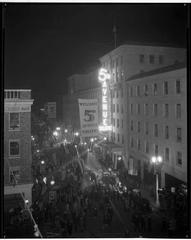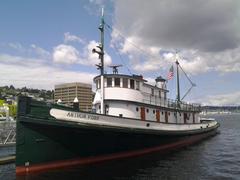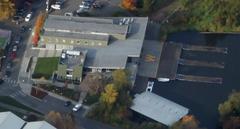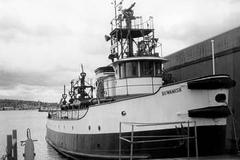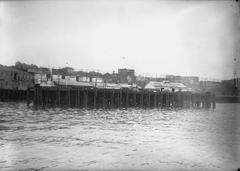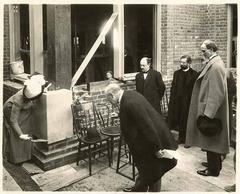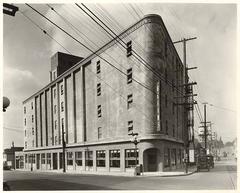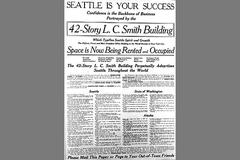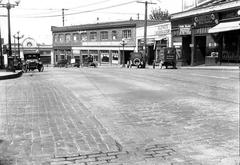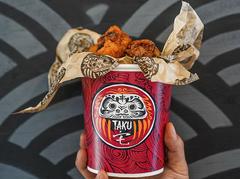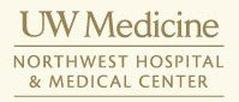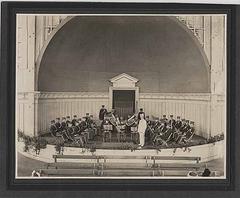Seattle Chinatown Gate: Visiting Hours, Tickets, and Guide to Historical Sites
Date: 04/07/2025
Introduction
Seattle’s Historic Chinatown Gate is a striking architectural and cultural landmark, marking the entrance to one of the oldest and most vibrant Asian American neighborhoods in the United States. Located at the intersection of South King Street and 5th Avenue South, the gate not only celebrates Seattle’s rich Asian American heritage but also serves as an inviting threshold to the Chinatown-International District. This comprehensive guide explores the historical significance, architectural features, visiting hours, accessibility details, and tips for experiencing the area’s heritage, festivals, and attractions.
For additional planning resources and the latest updates, consult the National Park Service (NPS), Visit Seattle (Visit Seattle), and the Wing Luke Museum (Wing Luke Museum).
Table of Contents
- Early Chinese Settlement and the Birth of Seattle’s Chinatown
- Displacement, Fire, and Community Resilience
- Growth, Diversity, and the Formation of the International District
- Challenges of the Mid-20th Century
- Preservation and the Creation of the International Special Review District
- The Chinatown Gate: Symbolism and Significance
- Visiting Seattle Chinatown: Hours, Tickets, and Accessibility
- Special Events and Cultural Festivals
- Dining and Accommodation Recommendations
- Nearby Attractions
- Photo Tips
- Frequently Asked Questions (FAQ)
- Summary and Visiting Tips
- References
Early Chinese Settlement and the Birth of Seattle’s Chinatown
Chinese immigrants began arriving in Seattle in the 1860s and 1870s, drawn by work opportunities in lumber, fishing, and railroad construction. By the 1870s, a concentrated Chinese community existed south of Pioneer Square, forming the earliest version of Seattle’s Chinatown (NPS).
Chinese entrepreneurs played a foundational role, opening boarding houses and businesses that became the social and economic backbone of the neighborhood.
Displacement, Fire, and Community Resilience
The Great Seattle Fire of 1889 destroyed much of the original Chinatown. Chin Gee Hee, a prominent Chinese merchant, led efforts to rebuild with the construction of the Canton Building on South Washington Street, spurring renewed development (NPS). Further urban projects like the Jackson Regrade in 1910 forced additional relocations, but the community re-established itself along King Street, solidifying the foundations of the present Chinatown.
Growth, Diversity, and the Formation of the International District
As the Asian community grew, the district expanded beyond its Chinese origins. Japantown (Nihonmachi), Manilatown, and later Little Saigon developed nearby, each contributing to the International District’s multicultural character (NPS). The area became home to a significant collection of pre-World War II buildings, reflecting its historical depth and resilience.
Challenges of the Mid-20th Century
World War II brought upheaval, most notably the forced incarceration of Japanese Americans, which emptied Japantown. The area then became a center for jazz and blues, as African American families moved in (NPS). Later, construction projects such as Interstate 5 and the Kingdome Stadium disrupted the neighborhood, leading to loss of housing and businesses.
Preservation and the Creation of the International Special Review District
Recognizing the need to preserve the district’s character, Seattle established the International Special Review District in 1973 (NPS). This designation protected the area’s historic and cultural assets, supporting revitalization efforts and the maintenance of its unique Asian American identity.
Hing Hay Park
A community gathering spot featuring a Taiwanese-style pavilion, Hing Hay Park is central to festivals and neighborhood life (NPS; Treksplorer).
Historic Chinatown Gate (Paifang)
The iconic 45-foot-tall gate at 5th Avenue and King Street marks the main entrance to Chinatown and serves as a symbol of cultural pride and resilience (NPS).
Kobe Terrace
Named after Seattle’s Japanese sister city, this terraced park features cherry trees, scenic walkways, and the Danny Woo International District Community Garden (NPS; Treksplorer).
Wing Luke Museum
Located in the historic East Kong Yick Building, the Wing Luke Museum is a nationally recognized institution dedicated to Asian Pacific American history (NPS; The Tourist Checklist).
Uwajimaya Village
A vibrant shopping hub anchored by Uwajimaya, the Pacific Northwest’s largest Asian grocery and specialty store, established by the Moriguchi family (NPS).
The Historic Chinatown Gate: Symbolism and Significance
Architectural Features
- Structure: Traditional Chinese paifang, approximately 45 feet wide and 22 feet tall.
- Materials: Over 8,000 gold-glazed ceramic tiles imported from southern China (Visit Seattle; 123HelpMe).
- Decorative Elements: Red columns for good fortune, dragons and phoenixes for harmony and prosperity, and calligraphy inscriptions welcoming visitors.
Symbolic Colors
Red and gold represent good luck and wealth; blue and green symbolize immortality, harmony, and growth.
Cultural Importance
The gate stands as a tribute to generations of immigrants and the neighborhood’s ongoing role as a cultural center (TripSavvy; Visit Seattle).
Visiting Seattle Chinatown: Hours, Tickets, and Accessibility
- Gate Visiting Hours: Open 24 hours a day, year-round; no admission fee.
- Nearby Attractions: Parks and public spaces are open from dawn to dusk. The Wing Luke Museum is open Tuesday–Sunday, 10:00 AM–5:00 PM (ticket required).
- Tickets: Only required for the Wing Luke Museum ($10–$15 for adults; discounts available).
- Accessibility: Wheelchair accessible sidewalks and public transit via light rail and bus lines.
Special Events and Cultural Festivals
- Lunar New Year Festival: Parades, lion dances, fireworks.
- Night Market: Asian street food, crafts, and entertainment.
- Music Events: Jazz and blues performances reflecting the area’s musical heritage.
Dining and Accommodation Recommendations
- Restaurants: Tai Tung (Seattle’s oldest Chinese restaurant), Uwajimaya Food Court, Harbor City Restaurant (dim sum).
- Hotels: Accommodations available in nearby Pioneer Square and downtown Seattle.
Nearby Attractions
- Pioneer Square: Historic arts and culture district.
- International Fountain: At Seattle Center.
- Seattle Waterfront: Shops, dining, and the Great Wheel.
Photo Tips
- Best lighting is early morning or late afternoon.
- The gate is especially photogenic during festivals and at night when illuminated.
Frequently Asked Questions (FAQ)
Q: What are the Chinatown Gate visiting hours?
A: The gate is accessible 24/7.
Q: Is there an entrance fee?
A: No, visiting the gate is free.
Q: Are guided tours available?
A: Yes, several organizations offer guided walking tours; booking ahead is recommended.
Q: How do I get there by public transportation?
A: Light rail (International District/Chinatown Station) and several bus routes serve the area.
Q: Are there annual festivals?
A: Yes, including Lunar New Year and seasonal Night Markets.
Q: Is the area accessible for wheelchairs?
A: Yes, sidewalks and public spaces are accessible.
Summary and Visiting Tips
The Historic Chinatown Gate is more than an architectural marvel; it embodies Seattle’s Asian American heritage and the enduring spirit of community resilience. Open around the clock and easily accessible, it is a focal point for festivals, food, and cultural experiences. Enhance your visit with guided tours, explore the district’s parks and museums, and sample authentic cuisine at local restaurants.
For insider tips, event updates, and interactive maps, download the Audiala app. Support neighborhood preservation by participating in community events and patronizing local businesses.
References and Further Reading
- Seattle Chinatown Historic District - National Park Service
- Seattle Chinatown-International District - Visit Seattle
- Exploring Seattle: 10 Don’t Miss Experiences in Chinatown International District - Seattle Pacific University Stories
- Seattle’s Chinatown-International District - Washington Trust for Historic Preservation
- Wing Luke Museum Official Website
- Seattle Chinatown International District - Treksplorer
- Things to Do in Seattle Chinatown-International District - The Tourist Checklist
- Chinatown Gate Symbolism - 123HelpMe
- TripSavvy: Things to Do in Seattle Chinatown-International District
For additional information, visit the Washington Trust for Historic Preservation and SPU Stories. Explore more about Seattle Historical Sites and Chinatown-International District Attractions for enhanced travel planning.
